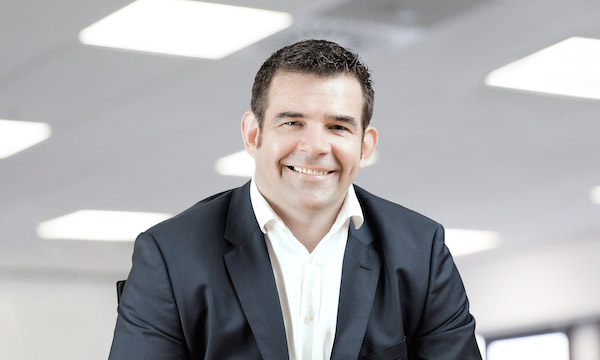 Redflow Limited Managing Director and CEO Tim Harris
Redflow Limited Managing Director and CEO Tim Harris
The New Zealand Rural Connectivity Group (RCG) has chosen Redflow zinc-bromine flow batteries to store energy in off-grid telecommunication sites in remote rural locations. Commercial negotiations to establish a direct relationship between RCG and Redflow to purchase batteries are now underway.
The RCG was established by the New Zealand Government in 2017 as an independent entity to build, operate and maintain a new open access network. The RCG will build over 400 new cell sites in rural locations to extend mobile and wireless broadband coverage to more than 34,000 rural homes and businesses, provide mobile coverage to a further 1000 kilometres of state highways and provide connectivity to more than 100 top New Zealand tourist destinations by December 2022. The new cell sites will be a combination of both off-grid and on-grid locations.
This critical infrastructure project is funded by the government’s Telecommunications Development Levy and an extra $75M from the three mobile network operators, Spark, Vodafone and 2Degrees.
RCG’s off-grid cell sites will meet their energy needs through a combination of PV solar panels, Redflow batteries and a backup generator. It is anticipated that the first site, which will use eight Redflow batteries, will be installed by the end of December 2019.
RCG Head of Procurement and Commercial, Richard Spencer, said the company looked forward to working with Redflow on this critical off-grid deployment. “We have closely examined Redflow’s energy storage technology and believe it provides a compelling solution for RCG due to its deep cycling capability, its long life and its environmental benefits over competing technologies,” he said.
Redflow Managing Director and CEO Tim Harris said the use of Redflow batteries at RCG’s sites was evidence of further progress in targeting the telecommunications sector and the environmental and performance benefits of zinc-bromine flow batteries. “We have been working with the RCG over the past six months and are delighted that we have been selected for this important deployment,” he said.
“This adds to the success of our recent deployments with Optus in the Daintree rainforest in Queensland, our current system powering an off-grid site for Vodafone New Zealand in the Thames Coromandel area and our recent order for one of South Africa’s largest telecommunication companies. We look forward to negotiating the supply arrangements with RCG and finalising the detailed financial elements of the relationship.”
For further information, please contact:
Corporate Investors Media Rural Connectivity Group
Tim Harris Ronn Bechler John Harris Caitlin Metz
+61 7 3376 0008 +61 3 9591 8901 +61 8 8431 4000 +64 21 033 1116
tim.harris@redflow.com ronn.bechler@marketeye.com.au john@impress.com.au Caitlin.metz@theRCG.nz
About Redflow www.redflow.com
Redflow Limited, a publicly listed Australian company (ASX: RFX), produces small 10kWh zinc-bromine flow batteries that tolerate daily hard work in harsh conditions. Marketed as ZCell and ZBM2, Redflow batteries are designed for high cycle-rate, long time-base stationary energy storage applications in the residential, commercial & industrial and telecommunications sectors, and are scalable from a single battery installation through to grid-scale deployments. Redflow batteries are sold, installed and maintained by an international network of energy system integrators. Redflow’s smart, self-protecting batteries offer unique advantages including secure remote management, 100 per cent daily depth of discharge, tolerance of high ambient temperatures, a simple recycling path, no propensity for thermal runaway and sustained energy delivery throughout their operating life.
Related News
- Redflow signs its largest global battery sale with Anaergia to supply energy storage in California The Anaergia Rialto Bioenergy Facility with an artist's representation of Redflow batteries installed Australian energy storage company Redflow Ltd (ASX: RFX) has signed an agreem...
- Simon Hackett deploys 280kWh Redflow-based rural microgrid at his farm in northwest Tasmania Simon Hackett with solar panel arrays at The ValeRedflow’s largest shareholder Simon Hackett has successfully deployed a Redflow-based rural microgrid that delivers energy independ...
- Redflow recruits energy storage veteran to grow sales Ben ShepherdAustralian energy storage company Redflow Limited (ASX: RFX) has recruited experienced battery industry executive Ben Shepherd to accelerate sales of its unique zinc-br...
- Redflow Board gains manufacturing expertise New Redflow board member David BrantAustralian energy storage company Redflow Limited (ASX: RFX) has today strengthened its Board by recruiting David Brant, an experienced business...





